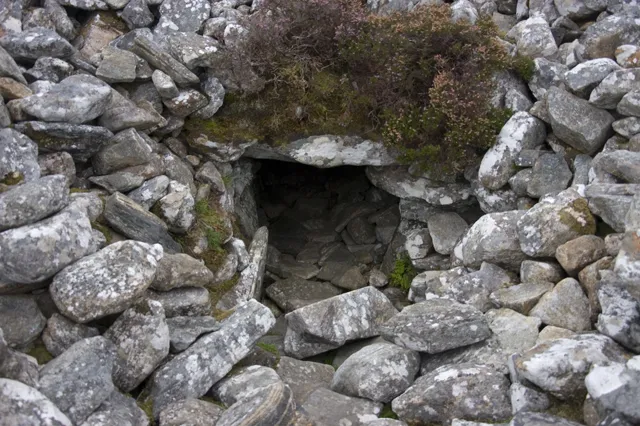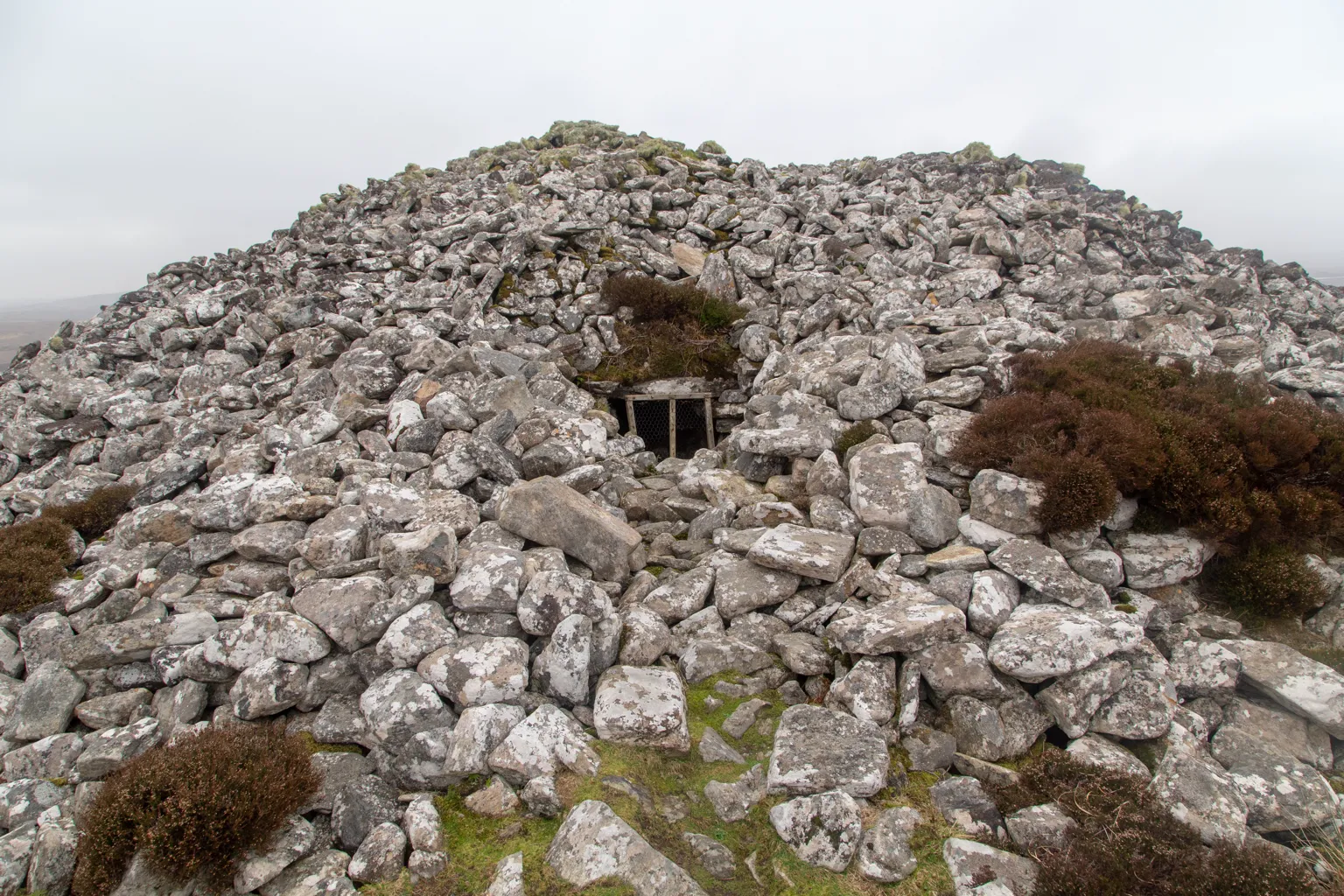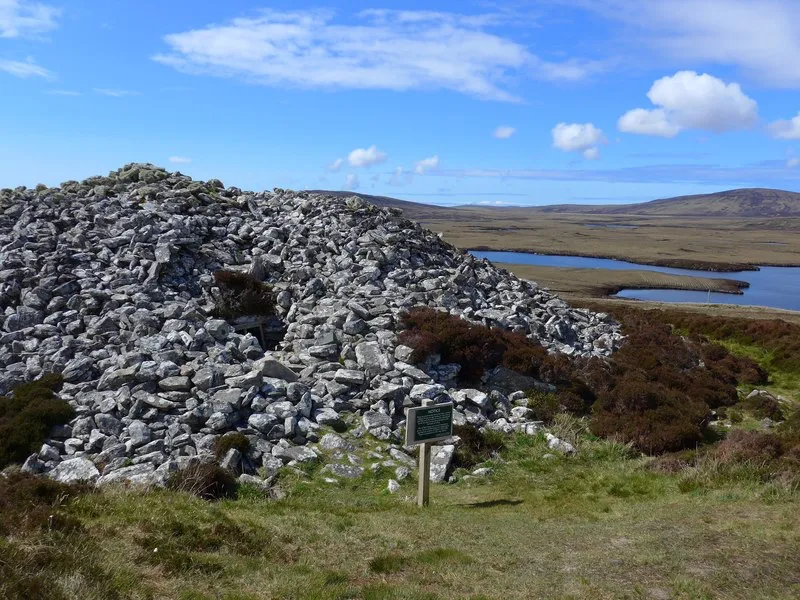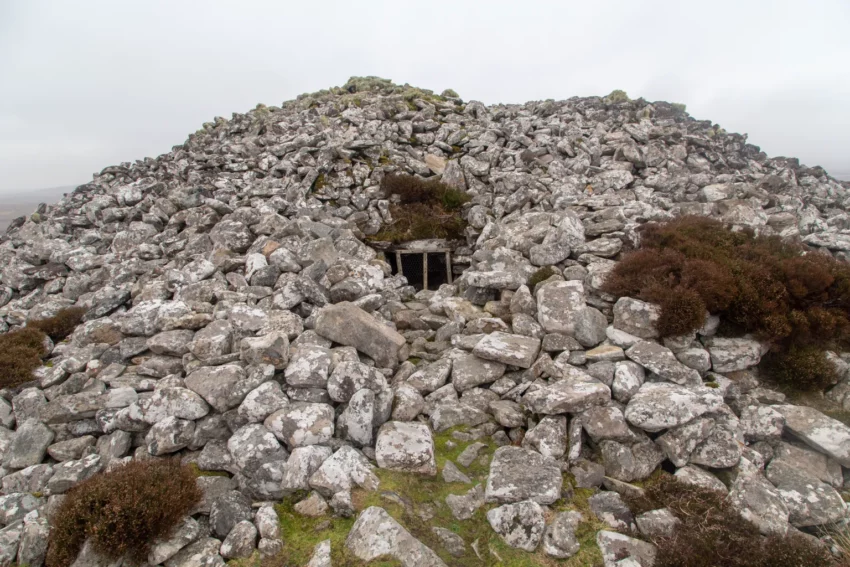Introduction to Barpa Langass
The Neolithic period, commencing around 4000 BC, marks a significant transition in human history, marked by the advent of farming, settled communities, and the construction of monumental architecture. Among these ancient structures are chambered cairns, which served as tombs or ritual sites. Barpa Langass, located on the Isle of North Uist in the Outer Hebrides, Scotland, stands as one of these testamentary Neolithic constructs.
Get your dose of History via Email
Architectural Features of Barpa Langass
Barpa Langass, dating back to around 3000 to 2500 BC, is characterized as a chambered cairn of the Clyde type, a subtype of the broader array of megalithic chambered tombs that populate the British Isles. It exhibits a largely intact single-chambered round cairn, with a diameter of approximately 72 feet (22 meters). The passage that originally granted access to the chamber is unfortunately now obstructed, making internal exploration difficult. Remarkably, the cairn has withstood the test of millennia, with numerous large stones still positioned along its periphery, enveloping a capacious central chamber.

Historical Significance and Excavation
The significance of Barpa Langass as a remnant of the Neolithic era extends beyond its mere existence; it provides a tangible link to the practices, rituals, and day-to-day life of the communities that traversed these landscapes thousands of years ago. Excavations in the 20th century have unearthed artifacts that shed light on the ceremonial functions of the cairn, such as the remnants of human bones, suggesting its use as a communal burial site.
Preservation and Visitor Information
Barpa Langass, while enduring, has not been immune to the damaging effects of time and human interference. The structure has shown signs of collapse, and to mitigate the potential loss of this invaluable piece of heritage, interventions have been made to stabilize and preserve it. Accessibility to the cairn is open to the public, with no admittance fee. Visitors may walk around the site to appreciate this architectural marvel of the past, albeit with caution advised due to the site’s fragile condition.

The Neolithic Context and Cultural Importance
The establishment of structures such as Barpa Langass speaks volumes about the sociocultural dynamics of Neolithic people, highlighting a complex social structure capable of organizing the labor necessary for such constructions. This functioned not only as a physical space for burial but as a focal point for communal identity and memory. Furthermore, its geographic placement within the Isle of North Uist associates it with a broader network of Neolithic sites across the British Isles, forming part of a grand cultural and religious landscape spanning across Europe.
The Cairn in Modern Scholarship
Barpa Langass has captured the imagination of the archaeological and historical community due to its well-preserved state, making it a focal point for studies of Neolithic monumentality, architecture, and mortuary practices. It serves as a quintessential subject for those interested in the prehistory of Northwestern Europe and continues to contribute immensely to our understanding of Neolithic society.

Conclusion
In conclusion, Barpa Langass exemplifies the complexity and capability of Neolithic societies and retains a palpable sense of mystique and wonder for visitors and scholars alike. The enduring presence of such monuments underscores the sophisticated nature of prehistoric communities in orchestrating such feats of construction and social organization. As research progresses, Barpa Langass will undoubtedly continue to offer critical insights into our collective past and the unwritten chapters of human history.
Sources: Wikipedia

